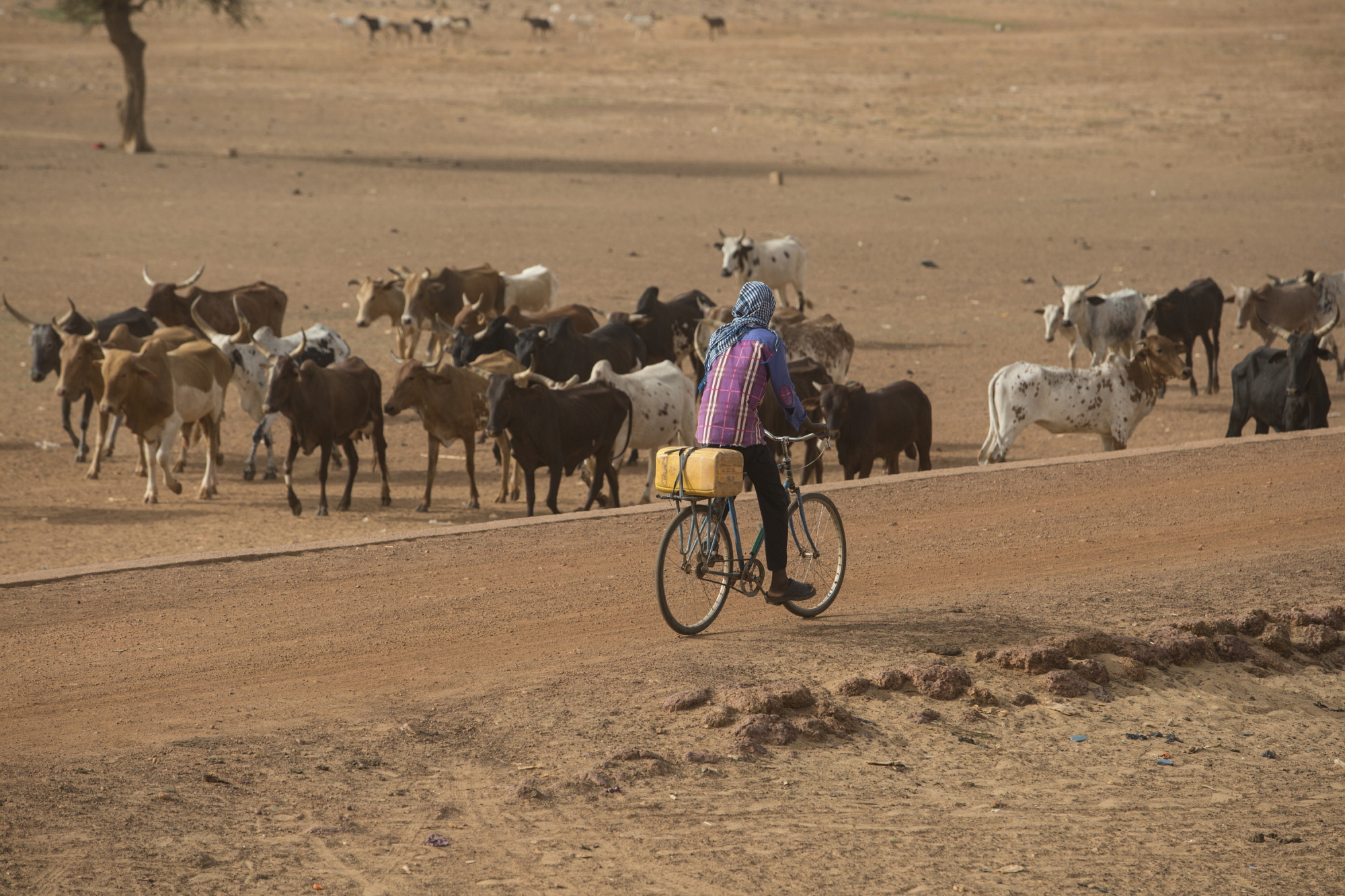Millions to benefit from new Sahel pastoralism project

The World Bank recently approved a USD 375 million project to continue strengthening the resilience of millions of vulnerable pastoralists and agro-pastoralists in the Sahel.
This new phase of the Regional Sahel Pastoralism Support project, known as PRAPS-2, will build on the legacy of its predecessor and introduce innovations for healthier animals and ecosystems, more resilient livelihoods and greater social and economic inclusion. An estimated 13 million people stand to benefit.
A multidisciplinary FAO team played a major role in designing the project, with significant contributions from partners such as the Institute for Research and Application of Development Methods (IRAM).
The Permanent Interstate Committee for Drought Control in the Sahel (CILSS) will retain the role of regional implementing agency, under the political leadership of the Economic Community of West African States and the West African Economic Monetary Union.
The six countries – Burkina Faso, Chad, Mali, Mauritania, Niger and Senegal – face similar development challenges. Climate change, rapid urbanization and population growth, conflicts and shocks disrupting food production, trade and mobility, like COVID-19, are just a few.
Tackling these challenges calls for strong political commitment, a shared vision, a well-coordinated approach and greater investment.
Caroline Planté, Senior Agricultural Specialist at the World Bank and PRAPS-2 Task Team Leader, pointed to the Bank’s commitment in keeping pastoralism high on the development agenda in West Africa.
“Pastoral systems provide food and income to millions of people in the Sahel. These systems are well-suited to the agro-ecological conditions of the region and are often the only productive activity these arid and semi-arid areas can support. Greater investment and stronger governance and management can help the sector grow sustainably and thrive,” she said.
Healthier animals, healthier ecosystems
Over the next six years, PRAPS-2 will invest in more robust animal health systems – from harmonized animal vaccination and disease surveillance activities to stronger veterinary services and controls on veterinary medicines.
There will be a big push to build, rehabilitate or upgrade critical infrastructure like veterinary units, border inspection posts, vaccination pens, livestock markets and rest areas along transhumance and trade routes.
Pastoralists will benefit from access to better secured and managed natural resources, including new grazing areas and water points. The project will also test approaches to sustainably increase cultivated fodder and strengthen capacity to measure feed availability using FAO’s improved feed balance methodology and guidelines.
Investments to improve livestock value chains will help open up more opportunities for earning income, from production to marketing. Early warning systems and pastoral crisis prevention activities will also be strengthened.
According to FAO Economist and Project Team Leader Julien Vallet, “this project, building on the good foundations put in place by the first phase, has a clear vision for addressing the issues that pastoral areas are facing in the region, from animal health to sustainable landscape management.”
“Cross-border cooperation and dialogue will contribute to the peaceful mobility of pastoralists, enhance land-use planning and transhumance as well as better market integration and trade within the region,” he added.
Greater social and economic inclusion
The Sahel is one of the youngest regions in the world, and gender gaps persist in pastoral communities. The project will invest in making technical and vocational training – from functional, digital and financial literacy to business and life skills – more accessible to women and young people from pastoral households.
The project will also improve access among pastoral communities to social and civil registries – vital for climate resilience interventions and social safety net schemes.
Sustainable growth
The FAO team used innovative tools like the Livestock Sector Investment and Policy Toolkit (LSIPT) and the Global Livestock Environmental Assessment Model, interactive (GLEAM-i) in designing the project. LSIPT provides analysis on the benefits and costs of livestock investments while GLEAM-i assesses the sector’s greenhouse gas emissions.
Badi Besbes, Head of FAO’s Animal Production and Genetics Branch, commended the fruitful collaboration with the Investment Centre on the design.
“By providing evidence-based data and analysis to inform livestock policies and investments, these tools will help livestock production systems in the Sahel develop in a way that is economically, socially and environmentally sustainable,” he said.
The FAO team helped CILSS partner with the UN Capital Development Fund to assist countries in identifying sustainable digital solutions for pastoralists and agro-pastoralists.
Together, these efforts will help the Sahel countries make progress on big development challenges – from reducing poverty, hunger and malnutrition to protecting the environment for future generations.
